
Indian Postal Heritage Buildings 2010
A Miniature Sheet consisting of 6 nos of commemorative postage stamps on Postal Heritage Buildings at Indipex 2011 – World Philatelic Exhibition : Delhi GPO, Shimla GPO, Udagamandalam HPO, Cooch Behar HPO, Nagpur GPO and Lucknow GPO :







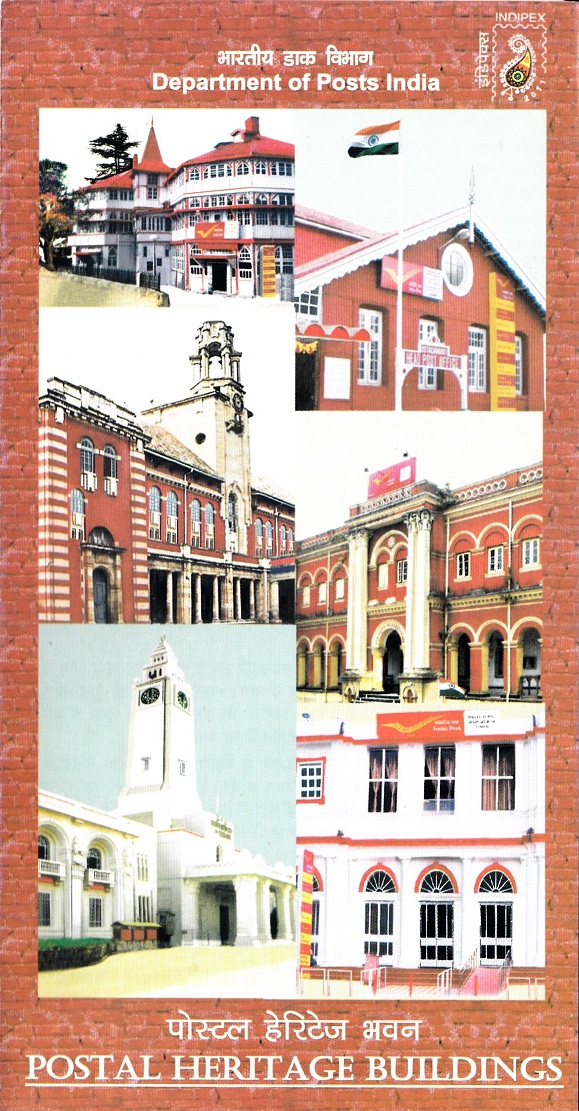 Issued by India
Issued by India
Issued on May 13, 2010
Issued for : India Post is happy to issue this set on postal heritage buildings as a precursor to INDIPEX-2011.
Credits :
Stamp & FDC : Sankha Samanta
Cancellation : Alka Sharma
Type : Miniature Sheet, Mint condition
Colour : Multi colour
Denomination : 500 Paise each
Stamps Printed : 0.4 Million each
Miniature Sheets : 0.4 Million
Sheetlet : 0.4 Million
Printing Process : Wet–offset
Printer : India Security Press, Nasik
About :
- India Post is bringing out a series of postage stamps to herald INDIPEX 2011 – World Philatelic Exhibition to be held in New Delhi from 12th to 18th Feb. 2011. The 1st set of six stamps is on postal heritage buildings.
- DELHI GPO is among the very few buildings of India Post which has been given the status of “Heritage Building” by the Archaeological Survey of India and is in close proximity to the historical Red Fort and Chandni Chowk. Opened in 1855, the Post office was given permanent status in 1865 and it started functioning in the present building in 1885. The land for Delhi GPO was purchased in 1870. It has a floor area of 45,457 sq. ft. It is considered a representative structure of the British period.
- SHIMLA GPO on the Mall, established in 1883 on the site of a house known and as “Conny Lodge“, is one of the oldest Post Office buildings in the country. During the British Raj, Shimla was the summer capital and the GPO acquired pre-eminence due to .its crucial role in ensuring effective receipt and despatch of Government mail or “Walayati Dak“.
- The GPO building is mainly a timbered structure with a tin-roof. It is a three storey building and an interesting element of its design is six large hollow pillars of stone and brick that “traversed its height“. Till 1920, firewood was used to warm the building in winter and enable the postal staff to perform their duties. The building is an excellent example of English hill architecture.
- On 21st September 1972, a fire on the first floor of the beautiful building burnt most of the old record. The building was soon renovated and its centenary was celebrated on 31/7/1983. In 1992 this building was declared one of the Heritage Post Office buildings in the country.
- UDAGAMANDALAM HPO The first Post Office at Udagamandalam was opened in 1826 with an establishment of a writer and two delivery peons. There are no records as to where the office originally was. In the earliest plan of Ootacamund (1829) the building which afterwards became the Post Office is shown and marked as Government Bungalow. Records show that in November 1833, the Post Office was at Rays house.
- A travellers’ Bungalow, later assigned to the post office, was a wretched hovel consisting of three small rooms. It was long used for postal purposes. In 1866 the whole building passed into the hands of the Postal Department, which continued to occupy it until 1878, when it was decided to pull down a considerable portion of the old structure and build a combined post and telegraph office on the same site. The post office was moved to its present quarters in December 1883 and this, along with the Telegraph Office & Law Courts, forms a cluster of ornamental buildings on Mount Road.
- COOCH BEHAR HPO In 1875 the Post & Telegraph Office of Cooch Behar State is learnt to have been introduced under the administrative control of Rangpur Postal Division. The Cooch Behar Post Office was initially functioning in the building situated in the Purana Post Office Para. Today it covers 8893 sq. ft. Maharaja Nriprendra Narayan built the present Head Post Office building and, during his regime, there were one telegraph office and five Post Offices in Cooch Behar State. On bifurcation of Rangpur Division, Jalpaiguri Division was created and later, the Cooch Behar Division was created on bifurcation of Jalpaiguri Division on 16th April,1979.
- NAGPUR GPO considered the mother institution in the Postal Circle of the Central Province, is housed in a majestic Victorian building, once the seat of erstwhile Postmaster General of CP & Berar. Built on a sprawling 9.5 acres located in the Civil Lines area of the city, the double storey building was built during 1916-17 to 1920-21 with a plinth area of 26622 sq. ft. in a complex that also has the Postmaster’s quarter and a huge garden.
- The structure is made of load bearing brick walls, steel columns, beams and ribs encased in lime concrete and plastered in lime internally with pitched roof in country tiles and battens. The exteriors make use of exposed bricks painted red and buff coloured sand stone. The main structure is flanked by wide verandas and is provided with Tuscan columns, a Roman arch in the Central Tower topped by a pavilion of 12 columns supporting a Clock Tower and a Flag mast. The alternating bands of brick and sand stone used at corners give the building its Neo Georgian touch but is interspersed with large semicircular stone screens (Jalis) reflecting the Eastern stone-craft of India. The clock, which still works, some antique post boxes and fire fighting equipment and the mixed styles of architecture make this building unique.
- LUCKNOW GPO is an example of relatively more contemporary engineering and architecture. Constructed with red bricks and lime stone, iron was not used in its construction. Its length is 86.5 meter and width 36 meter. The building has a beautiful 30 meter high tower with clocks on all four sides, giving a majestic look to the building. The ground floor has pillars and arches in sequence. The pillars on the ground floor have magnificent carvings which enhance its beauty. The First floor of the building has 25 rooms. A stone embedded on the main gate of the GPO dates the building as 1929-1932.
- Text : Department of Post.


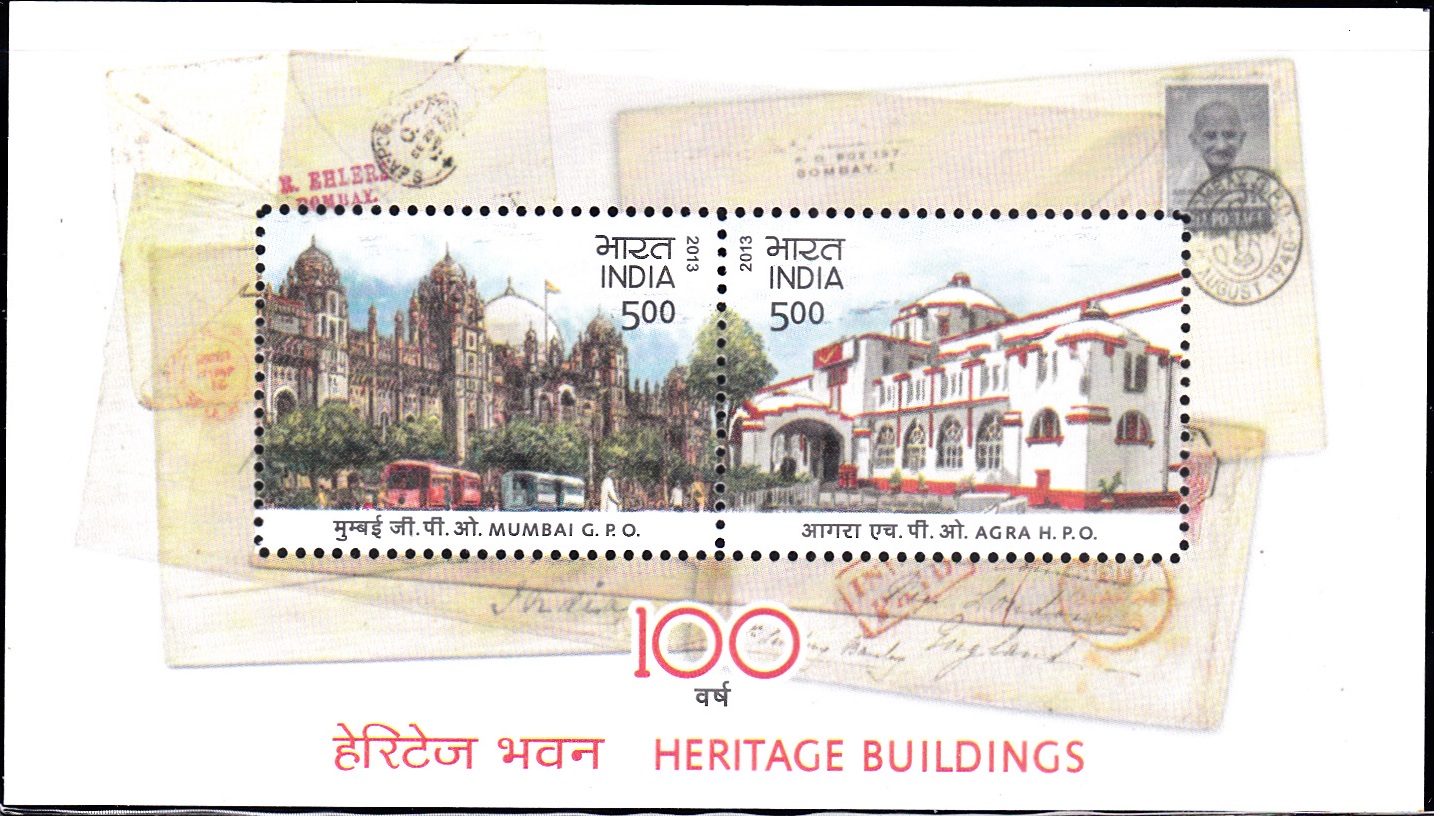
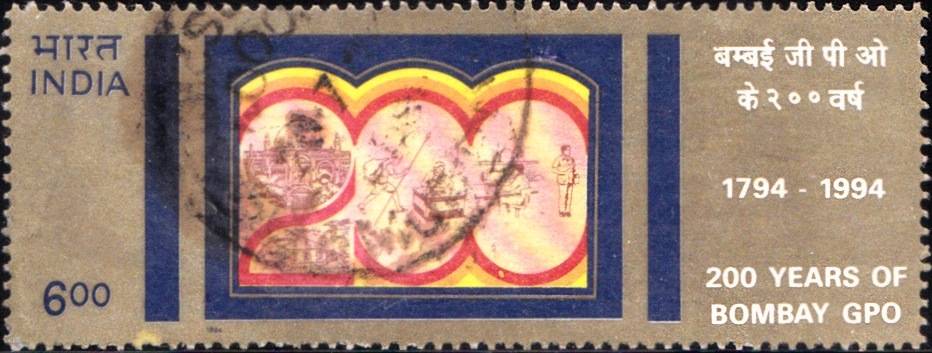
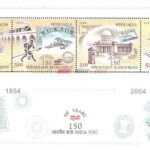

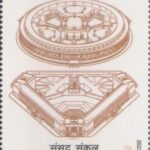
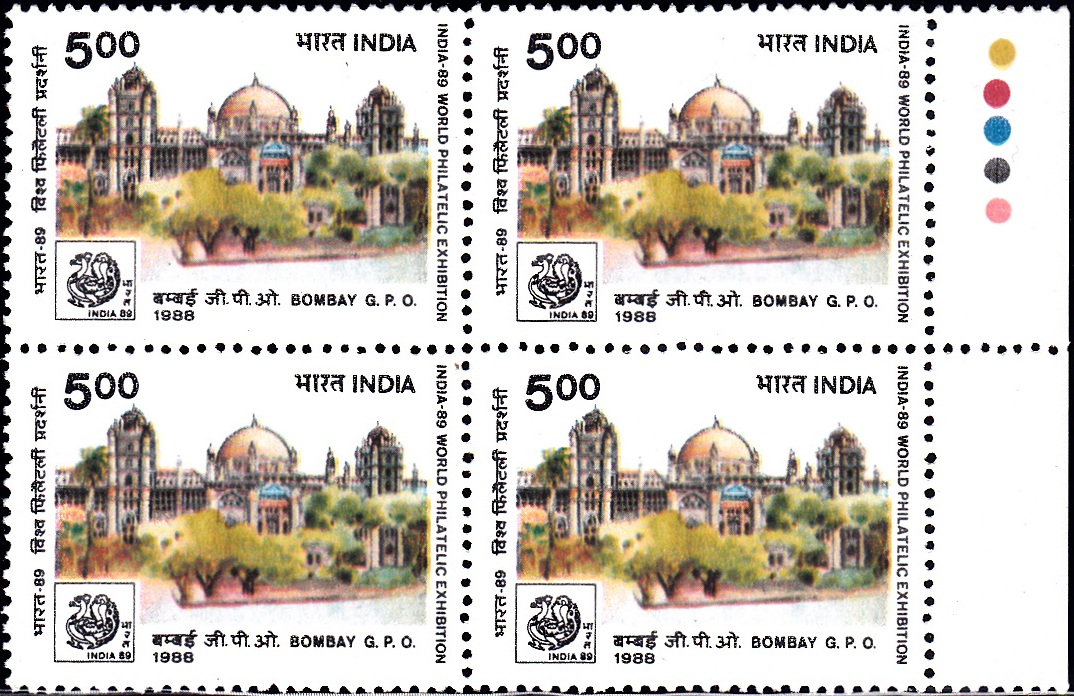
[…] February to 18th February, 2011 at New Delhi. In this series the first set of six stamps was on Postal Heritage Buildings. The second set of four stamps was on the stamps issued by princely States and the third and […]